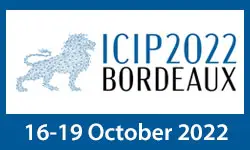Learning Based Reconfigurable Wideband Non-Contiguous Spectrum Characterization For 5G Applications
Himani Joshi, Mohammad Alaee-Kerahroodi, Bhavani Shankar M. R., Sumit J Darak, Sumit Kumar, Kumar Vijay Mishra
-
Members: FreeSPS
IEEE Members: $11.00
Non-members: $15.00Length: 08:40
04 May 2020
Introduction of spectrum sharing in 3GPP Release 17 demands base-stations (BS) with the capability to characterize the wideband spectrum spanned over licensed, shared and unlicensed non-contiguous frequency bands. Since, multiple-antenna and beam-forming are de facto approaches to meet the throughput and quality-of-service requirements, characterization of spectrum is desired over time, frequency as well as spatial domains. Though narrowband signal characterization is well-explored, wideband spectrum needs careful design of analog and digital front-ends along with tight integration with the baseband algorithms. Furthermore, non-contiguous spectrum demands intelligence to identify the part(s) of spectrum to be characterized so that ample transmission opportunities are identified. From a complexity perspective, optimal trade-off between accurate characterization of as many bands as possible with fewer number of antennas is a challenging research problem. The proposed demonstration offers intelligent and reconfigurable architecture for non-contiguous wideband spectrum characterization (vacant/busy status, center frequency and direction-of-arrival). Here, reconfigurability allows the BS to select and digitize non-contiguous frequency bands by performing sparse sensing in temporal and spatial domain. This is achieved via sparse antenna-array and finite rate of innovation based sub-Nyquist sampling technique. Whereas by optimizing the above trade-off, the online learning based intelligence allows the BS to successfully characterize the spectrum with fewer number of hardware resources. Specifically, we setup this problem as multi-play multi-armed bandit, develop novel algorithm and validate the same in real radio environment. This demonstration has found significant traction both with academia as well as industry given the multitude of use cases in 5G requiring efficient sensing and spectrum characterization for enhanced system operation. Furthermore, we also extend this demonstration for cellular-radar coexistence scenario in which identified transmission opportunities are exploited by the Radar communication systems. The setup consists of transmitter USRP(s) to generate directional wireless traffic with the desired distribution. The receiver, i.e. BS, consists of sparse antenna-array connected to the receiver USRP(s) synchronized via octoclock. The proposed signal processing and learning algorithms are realized in LabVIEW-NXG. We demonstrate the 34% gain in throughput (i.e. number of identified transmission opportunities) along with lower complexity with respect to state-of-the-art methods.



